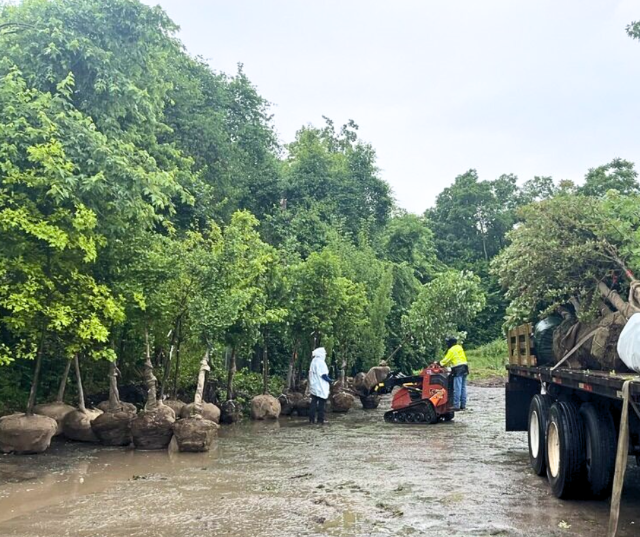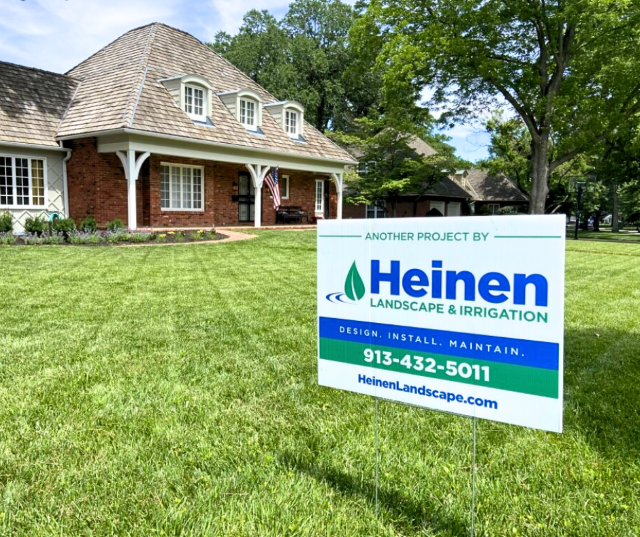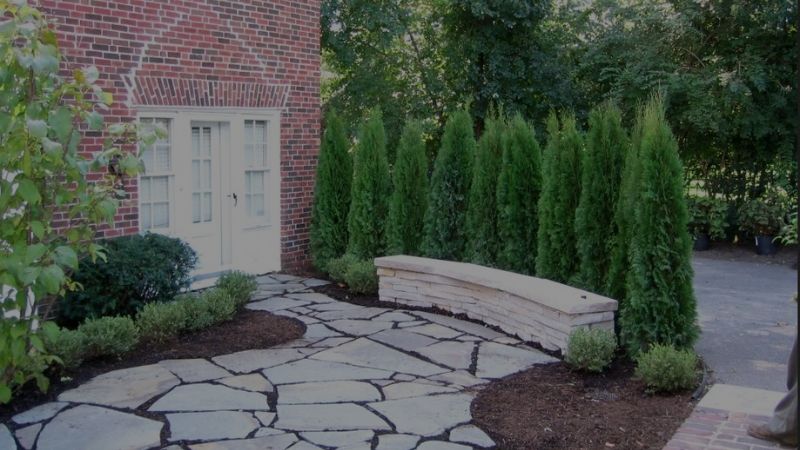Creating visually striking landscapes that remain healthy year-round requires planning, proper plant selection, precise horticultural care, and regular maintenance. Heinen’s 40 years of professional landscape experience give homeowners a definite advantage when it comes to designing, building, optimizing, and maintaining beautiful, long-lasting landscapes.

Heinen’s team of landscape experts sources plantings from reputable local nurseries.
Plant Selection: Considering Climate & Weather
Understanding climate, via the region’s USDA’s hardiness zone map and evaluating weather exposure for each planting site, are foundational elements of a well-conceived landscape plan.
Climate information guides choices in selecting plants that can withstand Kansas City’s extreme temperature swings. Daily weather variables – including the planting areas’ exposure to sun, shade, rain, and even wind – are also taken into consideration when choosing plantings.
Complementary Plantings
By strategically incorporating more robust, hardier plant selections into the plant mix, Heinen’s landscape designers help safeguard more sensitive plantings. Larger landscape elements, such as shrubs and trees, must also be carefully considered as their root systems and water consumption are significant. And, as trees and shrubs grow, they cast wider shade patterns on other nearby plantings – a factor that can be a plus or a minus. Thoughtful layering and blending of plantings creates a cohesive and thriving landscape that requires less intervention and maintenance throughout the years.
Native Plants
Native plants are inherently hardy because they’re naturally adapted to the region’s climate. These plantings offer a wide range of ecological and practical benefits. For this reason, the landscape team at Heinen works with native plants extensively. They require less watering and seldom need supplemental fertilizers and pesticides, which translates to lower environmental impact and maintenance costs.
These plantings also provide habitats for local wildlife, enhance air quality, and help mitigate flooding issues through effective water absorption. Prioritizing hardy, native plantings in landscape design creates beautiful and resilient outdoor spaces and establishes healthier soil systems.

Proper soil preparation and consistent irrigation and bed maintenance help ensure your landscape thrives for years.
Soil Preparation
Proper preparation and consideration of soil health play a major role in a landscape’s sustainability and longevity. Healthy soil is the first step to growing green turf, healthy shrubs and trees, and thriving plantings that require less chemical intervention. Soil needs to be biologically active, well-structured, and chemically balanced in order to support plant life effectively.
Heinen’s professional landscape teams first address any compacted or contaminated soils by identifying deficiencies. Testing identifies the appropriate compost or organic matter needed to repair the soil. Investing in soil health first helps reduce maintenance and the need for chemicals later.
More About Healthy Soil
What constitutes healthy soil? Simply put, healthy soil consists of organic matter and microbial life, has balanced pH and nutrient levels, and supports the critical microbes and invertebrates that break down organic material and replenish nutrients. When an effective soil system is in place, plants have easy access to necessary nutrients and water, and robust root systems develop naturally. Additionally, good soil health leads to better absorption of rainfall, reducing the risks of erosion and flooding.
Landscape Maintenance
Preparation of soil and selection of plantings make a huge difference in whether a landscaping thrives or struggles, but regular maintenance is just as important.
Maintenance should be performed seasonally. The changing seasons also change what needs to be addressed in the landscaping. In the spring, landscapes often need winter debris removed, and plant beds should also be checked for the onset of any weed, pest, or disease intrusions. Overgrown or dead branches should also be trimmed back from trees, shrubs, and larger plantings, as dead or unhealthy branches inhibit plant growth and open the door for pests or disease to take hold and even completely destroy a tree or shrub. In the fall, turf should be aerated, landscape beds freshly mulched, and fallen leaves removed. These steps help prepare landscapes for upcoming cold weather and also prepare plantings for the onset of spring.
Heinen provides a comprehensive suite of landscape maintenance services to both residential and commercial properties. The Heinen landscape team develops customized maintenance plans to address the unique needs of the client’s specific property. The maintenance plan takes into account several factors, such as plant type, soil conditions, seasonal considerations, and long-term landscaping goals. Precise care ensures landscapes remain healthy, vibrant, and resilient all year long.
 Achieve Your Landscape Goals with Heinen Landscape!
Achieve Your Landscape Goals with Heinen Landscape!
If you’d like to ensure your landscape’s success for years to come, there is good news: Heinen’s is here to help! With 40 years of landscape experience, Heinen’s team of outdoor experts partners with hundreds of Kansas City homeowners and businesses to design, enhance, and maintain stunning landscapes tailored to every taste and most every budget.






